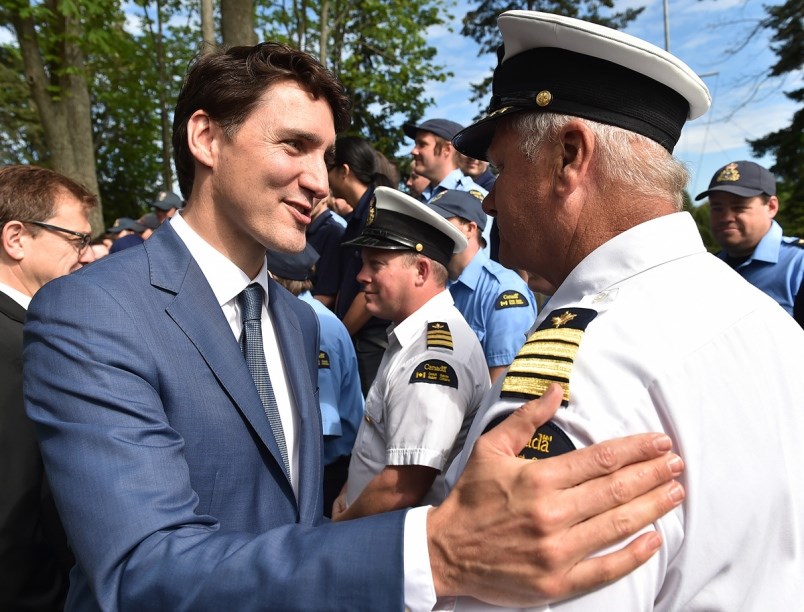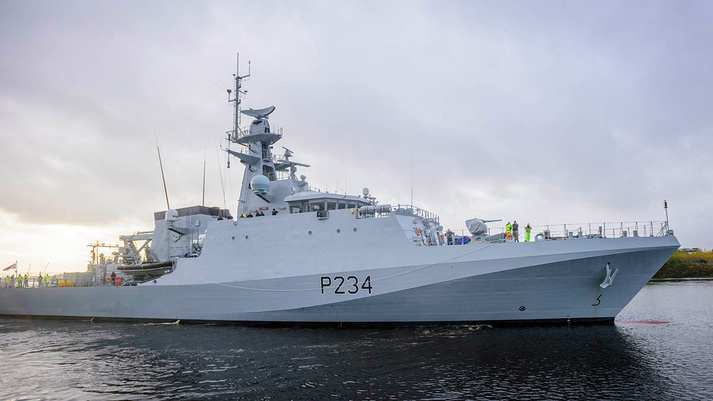- Reaction score
- 8,957
- Points
- 1,140
Maybe ST(A) doesn't have red toques like ST(P) does? I've never seen anyone but Sea Training in orange floater coats.Strange - I didn't see the red hats and involuntarily shudder...

Maybe ST(A) doesn't have red toques like ST(P) does? I've never seen anyone but Sea Training in orange floater coats.Strange - I didn't see the red hats and involuntarily shudder...
Nautical term to confuse those of us non Navy types

When I was in Sea Training we had them, its possible that they fell out of favor. I believe the pilots also have orange floater coats.Maybe ST(A) doesn't have red toques like ST(P) does? I've never seen anyone but Sea Training in orange floater coats.
So….an abundance of special seamen?The ship is closed up with "Special Sea Dutymen", meaning the ship is "fully" crewed(has enough to sail), and the pers who handle lines(part ship hands), staff steering, throttles, emergency steering, etc., are at their positions to take the ship alongside.
The folks in the orange floater coats are Sea Training, who are watching the crew, and assessing their ability to conduct operations safely.
Heddle would be delighted to obtain the government investment in their yards needed to build a replacement and they have the physical infrastructure to provide a good foundation upon which to build. They have dry docks in both Thunder Bay and St. Catharines that can handle the largest ship capable of transiting the Seaway and they are developing a skilled labour force as a result of being the only game in town for Canadian operators. they also have the interior space needed to build the modules.With the MCDV's seemingly serviceable for at least another decade if not more, is there any existing domestic yards which could build her replacement? It would seem that Irving, Seaspan and Davie are busy into the foreseeable future and I am not familiar with any other shipbuilders in Canada which could be relied upon to build a ship very likely even larger than the MCDV's.
Depends on what the replacement looks like. I suspect that it will go to Vancouver Shipyards as by the time they are done with the JSS and Icebreaker their yard will have space.With the MCDV's seemingly serviceable for at least another decade if not more, is there any existing domestic yards which could build her replacement? It would seem that Irving, Seaspan and Davie are busy into the foreseeable future and I am not familiar with any other shipbuilders in Canada which could be relied upon to build a ship very likely even larger than the MCDV's.
Seaspan to build 16 more Coast Guard ships says Trudeau

Seaspan to build 16 more Coast Guard ships says Trudeau
Up to 16 new Coast Guard ships will be built at Seaspan's Vancouver Shipyards as part of the National Shipbuilding Strategy, Prime Minister Justin Trudeau announced Wednesday.www.squamishchief.com
one other thing, they are also on side with Seaspan so they could work in tandem with them, utilizing Seaspan's acquired design skills to avoid costly and time consuming duplications.Heddle would be delighted to obtain the government investment in their yards needed to build a replacement and they have the physical infrastructure to provide a good foundation upon which to build. They have dry docks in both Thunder Bay and St. Catharines that can handle the largest ship capable of transiting the Seaway and they are developing a skilled labour force as a result of being the only game in town for Canadian operators. they also have the interior space needed to build the modules.


@Stoker I believe was saying that they are looking at about 1200-ton replacements with a similar crew size. Proper OPV.Part of NSS is that the main yards are specifically not allowed to bid on ships under 1000 tonnes; that would include MCDV replacements (unless they go bigger).
I real terms though we are running out of people so I can see some MCDVs and maybe a few CPFs parked.
perhaps that isn't so bad. When troubles threaten it is far faster and easier to find and train a crew than it is to start from scratch building a ship.@Stoker I believe was saying that they are looking at about 1200-ton replacements with a similar crew size. Proper OPV.
CPF's parked for sure. East coast needs to lay one up IMHO.
Is this listed anywhere publicly? This is the first I've heard of such a thing.Part of NSS is that the main yards are specifically not allowed to bid on ships under 1000 tonnes; that would include MCDV replacements (unless they go bigger).
I real terms though we are running out of people so I can see some MCDVs and maybe a few CPFs parked.
As somebody else said above, I think Seaspan is going to be busy for the foreseeable future. The 2021 Auditor General of Canada report regarding the National Shipbuilding Strategy has Seaspan listed as working on building Multi-purpose vessels for the CCG until the early 2040's, potentially even later as delays rack up. Irving is going to be busy with the CSC until nearly the 2050's and Davie will have their plate full for atleast a decade or more as well. Doesn't leave a lot of options available in regard to big yards.Depends on what the replacement looks like. I suspect that it will go to Vancouver Shipyards as by the time they are done with the JSS and Icebreaker their yard will have space.
Is this listed anywhere publicly? This is the first I've heard of such a thing.
Is that not reason enough for us to be looking seriously (now) at uncrewed vessels (both surface and subsurface)?Part of NSS is that the main yards are specifically not allowed to bid on ships under 1000 tonnes; that would include MCDV replacements (unless they go bigger).
I real terms though we are running out of people so I can see some MCDVs and maybe a few CPFs parked.
Not for what we use the ships for, but it's a good application for a cargo ship going on a known route or similar applications with minimal flexibility required.Is that not reason enough for us to be looking seriously (now) at uncrewed vessels (both surface and subsurface)?
There needs to be people to interpret the data (until AI/ML is good enough which is a long way away), but do they need to be onboard?We use our ships like swiss army knives, so that needs people onboard to interpret the data and act on it.
I'm not sure if it would need more people. For example, would a remotely crewed ship need the OOW to order the helmsman/throttleman? Or could they just make the course change?There are drones etc and the USN is working on an uncrewed combat ship for coastal patrols but that's way down the line when maybe AI is more advanced and can act independently to a certain extent. The current iteration of uncrewed ships are entirely remote controlled and monitored, so there is a crew, they just aren't on the actual ship, and rely heavily on sat uplinks for monitoring and control.
We already kind of suck at maintaining remote operation of crewed ships, which means you need more people to operate it safely, so not really sure we'd be able to keep up with the maintenance load of an uncrewed ship.
Agreed.Instead of trying for a technological solution, we could try sucking less as an employer by driving people into the ground to do more with less. It's been a known issue that has been snowballing for my entire career, and we haven't done anything about it to date. We were fortunate ATH and PRE 'self-divested' without major incidents, and running down the same path with the 12 CPFs.
Designing ships to be able to be swiss army knives is one of the reasons they are so expensive and we have so few of them. Having so few ships makes it hard to cover the vast areas that need to be patrolled and to have a combat ship where we need to have them.Not for what we use the ships for, but it's a good application for a cargo ship going on a known route or similar applications with minimal flexibility required.
We use our ships like swiss army knives, so that needs people onboard to interpret the data and act on it. There are drones etc and the USN is working on an uncrewed combat ship for coastal patrols but that's way down the line when maybe AI is more advanced and can act independently to a certain extent. The current iteration of uncrewed ships are entirely remote controlled and monitored, so there is a crew, they just aren't on the actual ship, and rely heavily on sat uplinks for monitoring and control.
We already kind of suck at maintaining remote operation of crewed ships, which means you need more people to operate it safely, so not really sure we'd be able to keep up with the maintenance load of an uncrewed ship.
Instead of trying for a technological solution, we could try sucking less as an employer by driving people into the ground to do more with less. It's been a known issue that has been snowballing for my entire career, and we haven't done anything about it to date. We were fortunate ATH and PRE 'self-divested' without major incidents, and running down the same path with the 12 CPFs.

